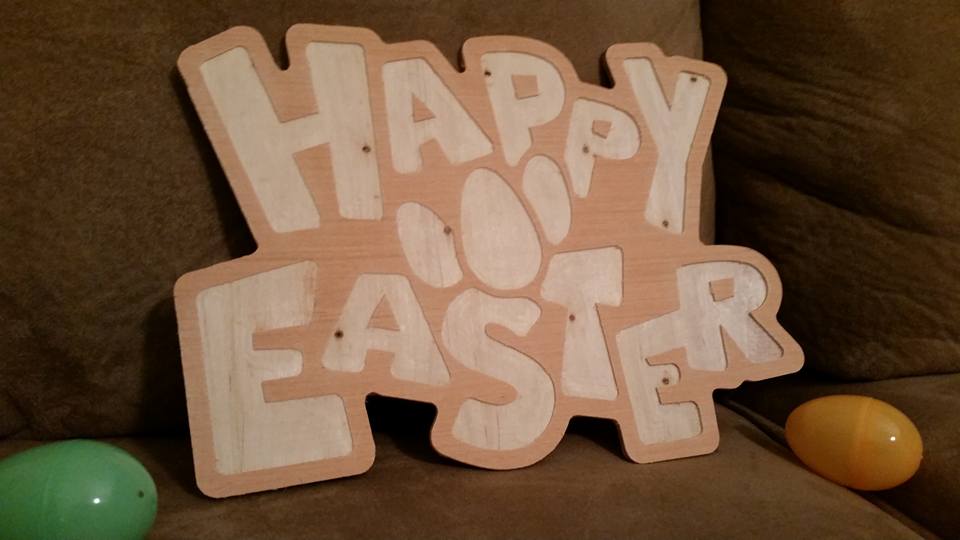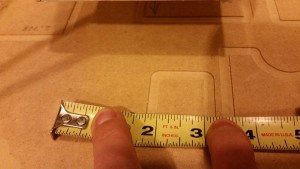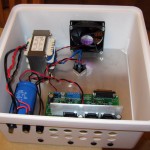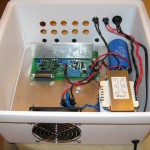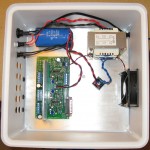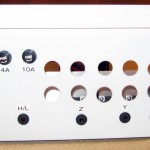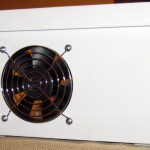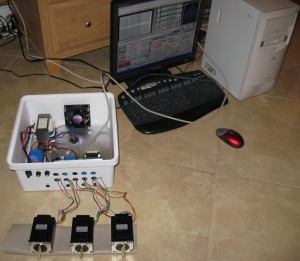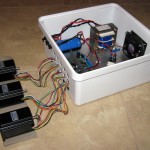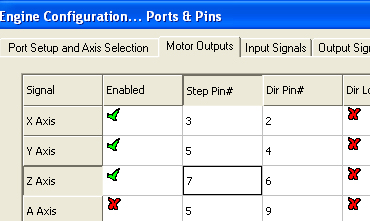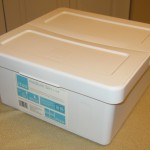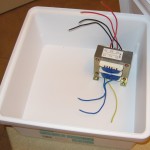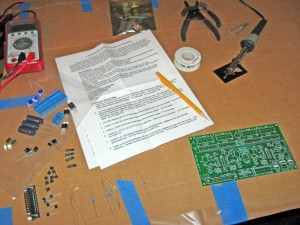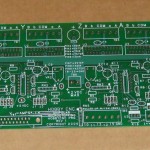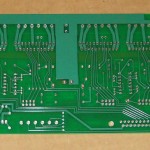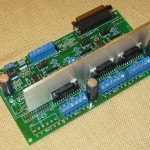First Actual Run
The first actual item produced on the machine, worked quite well. This was made using a 1/4″ bit at fairly conservative feed speeds.
6 years later, it lives again!
The last post here was 6 years ago. Since then, the machine has made it’s way from South Florida up to Spokane, WA. I just got it all back together and cleaned up a bit (surface rust). Still running Mach 3, as well as CamBam and CNCSimulator. One of my first projects is going to be cutting out holes in an enclosure for an LCD display.
CamBam was used to generate the milling profile and G-code, as shown in the first image. The second image shows the resultant G-code being tested using CNCSimulator. I stuck a photo of the LCD display I’ll be needing to cut holes for.
I did a quick test to check for accuracy. It cut a perfect (relatively) 1″x1″ square.
First Test of all 3 axis’s!
We’ve finally got the CNC machine up and running. Well, at least moving around! Still more work to do, but we’ve come a long way since the last posting. Here is a video showing our first test run with all 3 axis’s. You can hear some chattering in the X-axis. This will be corrected by either adjusting the micro-stepping from 1/2 to 1/4, or slowing the axis down a bit, or even a combination of both. Y and Z axis’s sound sweet!
First orders placed!
Just placed our first 2 orders for parts. At least a few more orders to go. This first round I got our linear carriages, Acme rod and some sleeves. We already have plenty of aluminum stock to fabricate the table itself, so that is not going to cost us anything.
Parts
This post is more for our own use, to keep a list of the components we need to acquire. I’ll be updating this as things are needed or changed.
From: www.CNCRouterParts.com
- ORDERED(2) Extended linear carriages — $33.50 ea — x 2 = $67
- ORDERED(4) Standard linear carriages — $23.50 ea — x4 = $94
- Total: $161
From: www.DumpsterCNC.com
- ACME 1/2″-8 2-start anti-backlash leadnuts —$19.50 ea — x3
- Thread couplers — $17.50 ea — x3 = $52.50
Thread clamps (shaft collar) — $9.75 ea — x6 = $58.50- Total: $111
From: www.SpeedyMetals.com
- ORDERED 1/4″ x 2″ 1018 Cold-Rolled Steel flat bar 36″ — $12.51 ea
From: www.McMaster.com
- ORDERED(3) Acme threaded rod 1/2″-8 2-start 36″ — $38.43 ea
- ORDERED(6) Thread Clamps (shaft collar) 1/2″ — $1.74 ea
Linear guide
I spent some more time tonight working on the design. I drew up a 3d model of CNCRouterPart.com’s extended linear carriage. Here’s a close-up rendering of the linear guide system, x-axis:
The Design
I’ve been working on the general design of our machine for a while now. But since the electronics are now complete, I’ve really got to get moving! We’re aiming for a size around 24″ x 36″, but that will be changing some. Here’s a quick rendering of what I’ve got so far:
We’ll make use of 80/20 extruded aluminum for the frame. Specifically, their 15 series 1530. The gantry will be of the moving variety, with the linear rails consisting of 1/4″ cold rolled steel with carriages from CNCRouterParts. The gantry will use 2 of their extended carriages, and 4 of their standard carriages for the Y and Z axises. We’re also planning on using 3 Acme lead screws from McMaster, 1/2″-8 2 start, made from 4140 with black-oxide coating.
DumpsterCNC will be our source for 1/2″-8 2-start anti-backlash nuts, couplers and collars.
It’s alive!
I finished up the wiring tonight and by 5:10am, the controller was running the steppers! Here’s some pics of the finished enclosure and electronics:
As can be seen in the photos, we cut a nearly square section of aluminum plate for the bottom of the enclosure. It adds a bit more rigidity to the base and also makes for a handy heat sink for the rectifier to mount directly to (with plenty of heat sink compound).
Here is the final product, with all the steppers hooked up and connected to the computer (running Mach3). The lid is still left off, I’ll eventually modify it to fit over the printer cable.
When I first started up Mach3 and ran the sample Roadrunner G-Code, only one stepper would move, although all 3 were “humming”. After a few minutes I discovered that I needed to configure the pin assignments for the 3 axis’s in Mach3. These are silk printed directed on the printed circuit board. Until now, I hadn’t paid any attention to those. 🙂 But after that, they all worked flawlessly.
Screen shot of the pin setup:
Here’s a 1 minute video clip:
Enclosure
The enclosure HobbyCNC recommends for the board and other electronics costs around $36. Not wanting to spend that much for a plastic enclosure, I sought out to find a much cheaper one. And I did, for just $6.99 at Target. I first looked at some standard Rubbermaid containers, but they’re a bit thin and flimsy. Then I came upon this one. It’s built more rigid and will make the perfect enclosure.
The dimensions are very similar to the suggested enclosure, just a tad bigger.
Controller board soldered
Wasting no time, I soldered the board together. These first few pics are of me getting setup to solder, and a photo of the front & back of the pcb:
(Click on images for larger version)
I spent about 4 hours completing this board, and probably another hour preparing the heat sink. The heat sink that comes with the kit is simply a cut length of aluminum that must be drilled and tapped to attached to the parts via a 4-40 screw. I went the extra step and sanded my aluminum with fine sandpaper.
Finished board:
